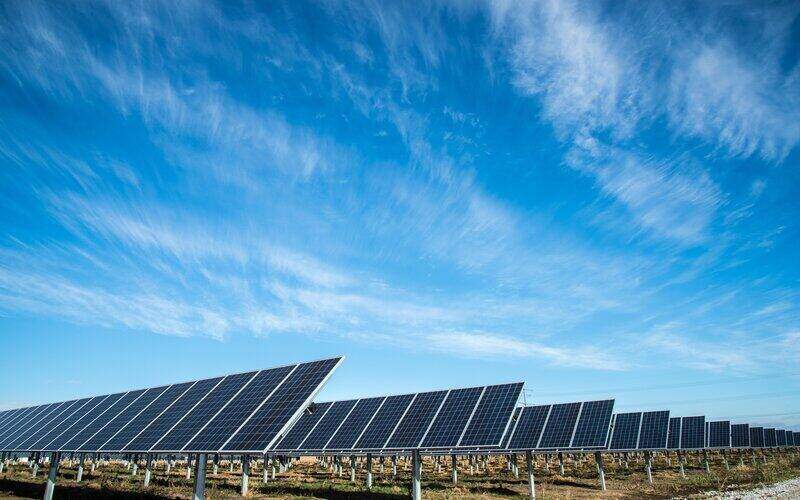Electricity prices for households in NSW, SA, and South-East QLD are set for power bill hikes of up to 23.7% from 1 July, prompting many Aussies to look for dollar-saving alternatives.
Solar remains the preferred method of choice for Aussie households as an alternative to electricity, with Solar Analytics CEO Stefan Jarnason (pictured below) noting Australia has some of the world’s cheapest solar to install because of how the industry has evolved.
“The cost of putting a solar system on your roof in Australia is less than half that of putting the same system on in the United States,” Mr Jarnason told Savings.com.au.
“Part of that is the way our electricity market is structured. We don’t have monopoly utilities that ban or make rooftop solar difficult, meaning we have an open and competitive electricity market.
“When you have those two things, rooftop solar is far and away the cheapest source of delivered electricity.”

Advertisement
Building or buying an energy-efficient home? This table shows some of the lowest interest rates in the market for 'green' home loans.
| Lender | Home Loan | Interest Rate | Comparison Rate* | Monthly Repayment | Repayment type | Rate Type | Offset | Redraw | Ongoing Fees | Upfront Fees | Max LVR | Lump Sum Repayment | Extra Repayments | Split Loan Option | Tags | Features | Link | Compare | Promoted Product | Disclosure |
|---|---|---|---|---|---|---|---|---|---|---|---|---|---|---|---|---|---|---|---|---|
5.49% p.a. | 5.95% p.a. | $2,836 | Principal & Interest | Variable | $0 | $530 | 90% |
| Disclosure | |||||||||||
5.44% p.a. | 5.49% p.a. | $2,820 | Principal & Interest | Variable | $null | $null | 60% | |||||||||||||
5.34% p.a. | 5.76% p.a. | $2,789 | Principal & Interest | Variable | $350 | $0 | 90% | |||||||||||||
5.50% p.a. | 5.79% p.a. | $2,839 | Principal & Interest | Variable | $299 | $0 | 80% | |||||||||||||
5.44% p.a. | 5.49% p.a. | $2,820 | Principal & Interest | Variable | $0 | $500 | 60% | |||||||||||||
5.54% p.a. | 5.59% p.a. | $2,852 | Principal & Interest | Variable | $null | $null | 80% | |||||||||||||
5.74% p.a. | 6.30% p.a. | $2,915 | Principal & Interest | Variable | $0 | $721 | 90% | |||||||||||||
5.69% p.a. | 6.03% p.a. | $2,899 | Principal & Interest | Variable | $0 | $530 | 90% |
| Disclosure | |||||||||||
7.64% p.a. | – | $3,544 | Principal & Interest | Variable | $25 | $0 | 70% | |||||||||||||
5.93% p.a. | 6.19% p.a. | $2,471 | Interest-only | Variable | $0 | $530 | 90% |
| Promoted | Disclosure |
Common problems with solar panels
While solar may provide the cheapest source of delivered electricity, Solar Analytics notes 66% of homeowners with solar installed have either a faulty system or are on a poor electricity deal.
“When you have solar it’s especially difficult to figure out which plan is best for you. Should you get a plan that has a higher feed-in tariff, a higher consumption tariff? There’s thousands to choose from which can make it a very hard decision,” Mr Jarnason said.
“Most solar systems will run really well for anywhere from five to thirty years, however just like your car, they have the potential to break down.
“Unlike your car, when your solar system stops working for the first time or starts working at half capacity, the first time you tend to notice it is when you receive a higher electricity bill leaving you to question why it is higher.
“Solar Analytics allows the ability to find and fix faults faster, saving customers on average an extra $109 a year by doing exactly that - finding and fixing faults in your solar.”
Solar Analytics operates by connecting to your solar system to collect and analyse energy data, providing Aussies with an overview of the energy profile of their home.
How to tell if your solar panels are faulty
There are two ways to determine if your solar panels are faulty according to Mr Jarnason, the first being to use a platform such as Solar Analytics; the second requires utilising Wi-Fi monitoring.
“The tricky way or what I like to call the 'retired engineer's way', is to use free Wi-Fi monitoring which most solar systems will come with,” he said.
“That will show you how much energy they are generating so you can take that and compare it to the weather, previous year results and even have an Excel spreadsheet to do these comparisons yourself.
“It’s like choosing between having a superannuation fund manager and having a self-managed super fund.”
Shopping around for the best solar deal
For those looking to install solar to beat the electricity price rises without forking out the thousands in upfront costs, there are a number of banks and lenders offering green or solar loans to help Aussies potentially earn credits on their power bills.
In the past year alone NAB, CommBank, Plenti and loans.com.au are just some of the names that have come to the party to offer solar discounts.
When it comes time to install your solar system, Clean Energy Council provides a list of accredited solar installers here.
To compare solar panel plans, the Australian Government’s Energy Made Easy website is tailored to help Aussie households find and compare the best energy plan.
Once installed, Solar Analytics allows Aussies to shop around for deals relative to their electricity generation and consumption behaviours with the service starting from $5.99 per month - more information on Solar Analytics can be found here.
Tips for households looking to install solar
Speaking to Savings.com.au, Smart Energy Co-Founder Beau Savage said while solar panels provide a great way for customers to save on their utility bills, not all solar panels are made equal.
With that in mind, Mr Savage has outlined some tips for Aussie households below looking to take advantage of solar to beat surging electricity costs.
1. Find a credible solar provider
“When considering a company, look into the credibility of the solar provider, and a typical return on investment of less than five years,” Mr Savage said.
“In order to achieve the most successful results, here are some considerations:
- Solar panels, inverters, and all other system components should be of high quality.
- The installation must be done professionally and comply with Australian standards.
- Solar panels have a lifespan of about 25 years, but when it comes to choosing a company to help you maintain your panels in another 10 or 15 years, you need to assess whether or not that company will still be around, otherwise you will be left with a huge cost in the long run.
- Make sure the company you choose has provided you with a full year performance estimate of the system and shown you a customised panel layout for your home. Solar isn’t a one size fits all solution so the system needs to be designed for you specifically.
“Pro tip: Steer clear of companies advertising rock bottom prices on television with retired sports people as ambassadors.”
2. Do your research
“It's important to do your own research and gather information on the solar panels, inverters, and batteries available in the market.
“Look for reviews and feedback from customers who have already installed solar systems in their homes. You can do this through searching for solar companies on Google or Facebook, where reviews and comments are allowed. If a provider has a long track record of satisfied customers, there will be evidence online.”
3. Check for rebates and incentives
“It is always worth checking if there are any available grants, rebates or incentives within your state that can help reduce the cost of installing solar.
“Make sure to check for eligibility and take advantage of these offers.”
4. Don't compromise on quality
“While it may be tempting to go for a cheaper option, compromising on quality may result in poor performance and costly repairs in the long run. Invest in a high-quality solar system from a reputable installer.
“Make sure to understand the warranty and maintenance requirements of your solar system. Despite being a lucrative price grab, cheap solar energy systems usually have cheap components. You must ensure the solar components you select are covered by adequate warranties.”
Image by American Public Power Association via Unsplash

Ready, Set, Buy!
Learn everything you need to know about buying property – from choosing the right property and home loan, to the purchasing process, tips to save money and more!
With bonus Q&A sheet and Crossword!









 Harry O'Sullivan
Harry O'Sullivan
 Bea Garcia
Bea Garcia
 Denise Raward
Denise Raward
 Brooke Cooper
Brooke Cooper
 Rachel Horan
Rachel Horan

